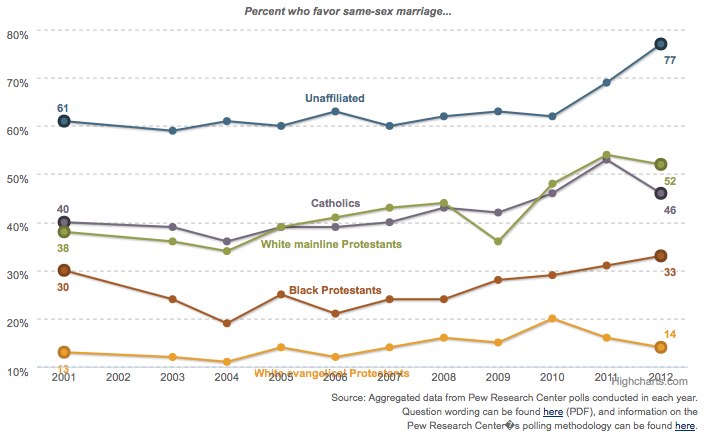 Lord knows I don’t want to discourage Minnesota Public Radio (MPR) from any future exercise in transparency. But after reading Laura Yuen and Euan Kerr’s (long and commendably comprehensive) historical explanation for how and why their employer dealt with Garrison Keillor the way they did, I’m still giving Keillor the benefit of the doubt.
Lord knows I don’t want to discourage Minnesota Public Radio (MPR) from any future exercise in transparency. But after reading Laura Yuen and Euan Kerr’s (long and commendably comprehensive) historical explanation for how and why their employer dealt with Garrison Keillor the way they did, I’m still giving Keillor the benefit of the doubt.
My reasons for this are connected to three statements Yuen and Kerr make in their piece (which I have to assume was combed through, massaged and finessed like a federal indictment) and what I recall from moments with Keillor.
The statements, in the order they appear are:
“MPR News has had to rely to an unusual degree on anonymous sources in covering the Keillor story. Staff members — even former staff members — are reluctant to discuss their experiences at the company … .”
“[Bill] Kling and [Tom] Kigin are now retired and declined to comment for this story.”
“MPR said its outside investigation into the claims of inappropriate behavior, conducted by the law firm Briggs and Morgan, has been ‘substantially complete’ for months. [Jon] McTaggart has no plans to disclose more information about its findings, saying he needs to respect the privacy of the woman involved.”
The story notes the high possibility that MPR’s summary execution of Keillor after years of tolerating his, shall we say, on-the-job romantic adventures, was due to the #MeToo moment. Ignoring a supervisor with a habit of hitting on women subordinates and writing them racy mash notes just doesn’t cut it any more. So there’s that, and the fact that at 75 Keillor’s prime revenue-producing days are behind him.

But another movement MPR fails to acknowledge is the more nascent evolution in journalism thinking that says “transparency is the new objectivity.”
Translated for lay-folk understanding it means this: In this day of fake news and wall-to-wall PR blather bona fide journalism organizations should consent to displaying and discussing the work they’ve done to reach important conclusions.
In that context, and this Keillor business is as high-profile as anything MPR may ever fall into. So if MPR wants its view of the Keillor episode to carry the day it should release all the information its “independent” lawyers, (who presumably were paid by MPR and therefore regard MPR as a client), amassed on Keillor and then, after the public has had time to digest it, present CEO McTaggart in some sort of “independently” moderated forum to take on all questions.
The name of the key woman in the story — a woman in her 50s remember, not a naive grad student — can be protected via redaction, etc.
Since both MPR and Keillor have agreed not to sue each other as part of the settlement over his archived material, full disclosure (i.e. transparency) of the indicting evidence would make for a fascinating, healthy debate on all sorts of facets of the #MeToo moment, especially since Keillor seems unabashed in defending himself.
But then “transparency” is not a word much in favor at MPR or many other news organizations in 2018. Yuen and Kerr’s piece quotes former media writer David Brauer echoing everything I’ve said about MPR for almost 30 years. Namely, MPR has always operated with extraordinarily tight corporate control over its image and message. This is understandable once you understand the strategic structuring of MPR’s financial base, with its close, fraternal associations with prominent area companies for both underwriting and board service. Bill Kling (MPR’s founder) had no intention of running another rag-tag, semi-hippie “public radio” station. He was an empire builder and successful empires run by a far different set of rules, where openness and transparency are not necessarily virtues.
Very much like any large corporation, MPR consented to media inquiries if they believed favorable publicity (i.e. a PR boost) was in the offing, and either resisted or flat-out ignored anything that came with a hint of a negative vibe. This created what always struck me as an eery, “Body Snatcher”-like quality in even casual conversations with MPR employees, both current and former. It’s not an exaggeration to say trepidation bordering on fear was a palpable affect. Saying anything was so fraught it was better to avoid it entirely.
I don’t know how you live like that.
So I’m not surprised to read Yuen and Kerr had to rely on a lot of anonymous quotes from their own colleagues. They’re lucky they got that.
Likewise, it is no surprise to anyone that neither Kling or Kigin, the two executives most responsible for monetizing Keillor’s popularity, offered any comment … to their own newsroom. That too is classic MPR.
As for Keillor, he was a primary character on my media beat for 15 years. (I was once told by an editor, “We’re going to own that guy”, meaning, “cover him like he’s our property”). As such Keillor and I got along OK, until we didn’t.
He was an established celebrity — of, thank god almighty, actual literary and intellectual depth — when I began interacting with him in the late ’80s. (I did follow him out to Hawaii for a show in the mid-’80s.) And while clearly a talented, ambitious guy with a skeptic’s radar for fools, he was hardly anyone’s idea of Stepford-grey corporate soldier. Moreover, by the mid-Nineties it was obvious to everyone how valuable a commodity he was to Kling’s empire building. Put another way, he had leverage over Kling and Kling knew that.
This is meant to explain that while Kling and Kigin neither say or admit to anything, they were obviously in the very familiar business of straighter-than-straight businessmen tolerating the louche behavior of “talent” in the long-term interest of the bottom line.
Keillor’s mercurial romantic moods were an open secret, certainly for anyone who cared to notice. Most didn’t. And if he was routinely falling in and out of infatuations with women he met or performed with, so what, really? He was an artist. And a very good one. He is one of the rare people unmoored from the Victorian/protestant bonds controlling us “ordinary folk.”
Obviously, times have changed, and for the better. Certainly for women badgered and oppressed by workplace clods. Yuen and Kerr present a picture of Keillor as a — that word again — mercurial boss. Shouting and saying demeaning things to his staff. That’s unfortunate, but hardly unique. But if the #MeToo movement is going to expand its focus to include bosses who should not be bosses, supervisors who are simply abusive, irrational, duplicitous or whatever, instead of just horny creeps squeezing butts, there’ll be even more management job openings coming along real soon.
In facile terms, I see nothing anywhere that suggests Garrison Keillor was in the same league as Harvey Weinstein, Matt Lauer or Charlie Rose. In fact, if we care to adjust our lens a bit, Keillor’s seductive style seems to be more in step with the courtly tradition of attention, flattery and … racy mash notes, most with amusing phrasing and proper punctuation.
I remember having lunch with Keillor in Miami back in Prairie Home’s heyday. The Bill Clinton-Monica Lewinsky scandal was on everyone’s tongue. I forget what specific element of the story was trending that day, but Keillor got into a riff about not just “things guys say to get laid” but the way both sexes distort the truth to get what they want out of a romantic relationship. Some of it is as innocent as creating a pleasurable fantasy. Some of it is anxiety that saying what you really think will kill your chances. Either way, “honesty” in matters of seduction was often in short supply, and us humans kind of like it that way.
At the very least Keillor was not applying harsh Calvinist judgment to Bill Clinton’s randy exploits. And if you ever watched him interact with his fan base after a show, like the one in Miami Beach that weekend, you understand why.
The ballroom-like space was pretty well packed, with the upscale, mostly middle-aged (white and well-tanned) South Florida crowd milling about sipping wine and maneuvering for a moment to meet … the star attraction. For a “shy guy” Keillor was actually pretty good at the schmooze thing. He was gracious for the duration and had a quip for pretty much everyone who approached him.
But even your dullest corporate drone couldn’t help but notice the women. As I say, respectable, upscale ladies, impeccably manicured and accessorized, women long past their silly, star struck schoolgirl phase. But there they were, ever so noticeably tossing and fussing with their hair, pursing their lips, making longer-than-necessary eye contact while regularly caressing his forearm, elbows and not exactly hard iron biceps. All while balancing their stemware. The braver among them finagled hugs.
Keillor lived in a realm where the opportunities for the kind of consensual romance that the average man and woman moon over were constantly, readily available. And not skeezy rock star-groupie one-offs, but relationships with women of quality and often talent.
That’s a reality that no doubt horrifies legalistic corporate bureaucrats. The impropriety! The potential financial consequences! But it is an essence of life. Can we admit that?
The fact such “opportunities” is also asking for trouble in the workplace is indisputable. Hence our current moment. But there is so much range and variation to “sexual harrassment” I’m not content with a hired-up, sealed-off judgment like MPR is presenting as a full and final statement on the matter.
For his part, I truly hope Keillor takes his act back on the road and uses his microphone to explore why men and women do what they do and think what they think.
That’d be healthy for everyone involved.

 As further proof that my cynicism knows no depths, let me assert that based on decades of experience, it is my belief that when it comes to personnel issues, by gargantuan enterprises like NBC/Comcast or merely big ones like Minnesota Public Radio …
As further proof that my cynicism knows no depths, let me assert that based on decades of experience, it is my belief that when it comes to personnel issues, by gargantuan enterprises like NBC/Comcast or merely big ones like Minnesota Public Radio … 
